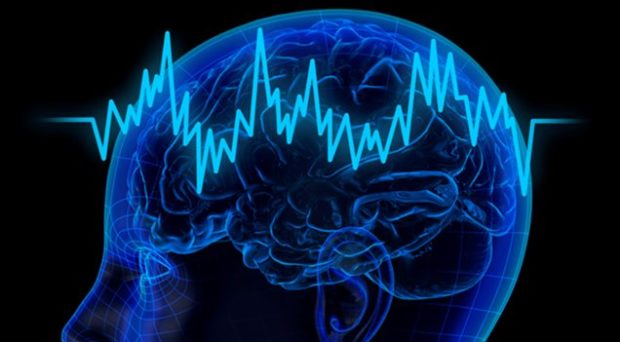
Deep Brain Stimulation (DBS) has evolved into an effective therapeutic agent for movement disorders such as Parkinson’s Disease (PD), Essential Tremor (ET), and Dystonia. The stimulation is delivered through electrodes that are stereotactically implanted by a functional neurosurgeon normally while the patient is awake.
Following implantation, the electrodes are connected to an Impulse Pulse Generator (IPG) that usually sits in the patient’s chest just under the clavicle. An external programmer is used to communicate with the IPG to program delivery of the electrical impulses through one or more of the four contacts on the distal end of the electrode.
The size, shape and intensity of the field can be changed in a variety of ways through adjustments in contact polarity, amplitude, pulse width, and frequency to ameliorate abnormal movements while minimizing spread of the stimulation in to unwanted regions.
Parkinson’s Disease
DBS is indicated for idiopathic PD patients suffering with medication refractory tremor, motor fluctuations and/or troublesome dyskinesia. The Subthalamic Nucleus (STN) and the Globus Pallidus Internus (GPi) are the targets of choice, with the STN being the commonest due to the significant medication reduction (approximately 50%) that can be achieved.
Both targets are similar in managing the cardinal symptoms of PD and improving the ON-time, which is the period of optimal symptom control from medication(s). However, unlike STN-DBS, which reduces dyskinesia via medication reduction, GPi-DBS has direct anti-dyskinesia effects and only permits modest medication reduction. Therefore it is important that a patient’s clinical condition and medication regimen are taken into account when deciding which target to select.
The benefits are realized immediately and patients can expect DBS to mimic the benefits of levodopa while extending their overall ON-time on an average of five hours. Dyskinesia declines by approximately 70% or more and sustained long term improvements in all cardinal symptoms are observed with tremor and rigidity responding by 70-90% and bradykinesia 50-60%.
Speech, freezing, and gait problems do not tend to improve. Furthermore, it usually takes 3-6 months to achieve clinical optimization, as gradual adjustments of the DBS need to be tailored to the patient’s symptoms and medication changes.
The benefits are realized immediately and patients can expect DBS to mimic the benefits of levodopa while extending their overall ON-time on an average of five hours.
Essential tremor
Patients with essential tremor that is refractory to medication and severe enough that it is interfering with quality of life should be considered for thalamic (VIM) DBS treatment. Long term outcome studies show that tremor improvement ranges from 50-90% which is sustained for at least 5-7 years.
Bilateral stimulation is not only efficacious in managing severe upper limb tremor (both the postural and kinetic aspects) but also improves head and voice tremor. Of note, bilateral DBS carries a higher incidence of dysarthria and gait abnormality.
These symptoms can be amenable to stimulation adjustments, but could persist despite efforts to modify the parameters. Studies reported that anywhere from 10-40% of patients experience a decline in stimulation benefits over time, possibly related to underlying disease progression or tolerance to stimulation.
Dystonia
In 2005, DBS was granted a humanitarian device exemption (HDE) for primary dystonia. GPi-DBS has been shown in numerous studies to be the most efficacious target for dystonia. The therapeutic benefits for primary dystonia are realized over 3-6 months and require a higher stimulation when compared to PD or tremor.
Primary generalized dystonia related to DYT-1 (TOR1A) mutation is exquisitely responsive. Clinical improvement is long lasting with reduction in dystonia close to 80-90%. Similar response rates are seen in non-DYT1 generalized dystonia, while DYT-6 and 12, with prominent lower cranial-cervical involvement are less responsive.
Among focal dystonias, recent studies reveal approximately 40% improvement in medically refractory primary cervical dystonia with further reports showing robust amelioration of medically refractory meige syndrome and idiopathic truncal dystonia.
Secondary dystonia tends not to respond to DBS. However, tardive dystonia have been shown to benefit greatly from GPI-DBS with proclivity for improvement to occur sooner than primary dystonia.
Studies reveal approximately 40% improvement in medically refractory primary cervical dystonia with further reports showing robust amelioration of medically refractory meige syndrome and idiopathic truncal dystonia.
Unraveling the mechanism
By convention, high frequency (130-185Hz) stimulation in the STN, VIM or GPI drives the therapeutic gain in all of the movement disorders discussed earlier. While the mechanism of DBS remains unknown, there is mounting evidence that modulation of neuronal networks and suppression of pathological activity within these networks in the disease engenders clinical benefit.
Therefore, frequency dependent modulation may serve as an important underpinning in the manner by which stimulation is delivered to various targets across the numerous movement disorders. Coupling this with structural and functional imaging data that is enhancing visualization of these neuronal axonal pathways, new surgical targets such as the pedunculopontine nucleus and caudal zona incerta and their networks have gained attention as of late.
As our understanding of the mechanism of neuromodulation grows, it will enhance the application of DBS for existing conditions and likely lead to its expansion for new indications.
Comments